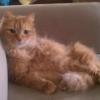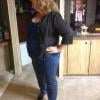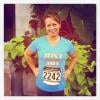Search the Community
Showing results for 'alcohol'.
Found 17,501 results
-


Ugh, I Cheated Big Last Night... First Time Since The Pre-Op Diet!
bev712 replied to Toddy's topic in LAP-BAND Surgery Forums
I was advised by my surgeon NOT to drink alcohol because it's just empty calories, and I'd rather spend them on food with nutritional value. I hardly drink anyway, but if you MUST have some wine, limit yourself to one good-size glass and just sip it for as long as you can make it last. Drink red, which doesn't lose its taste when it gets to room temperature. If your friends comment, just say that you don't like the way you feel when you drink too much or too fast. And that's probably the truth. -


Ugh, I Cheated Big Last Night... First Time Since The Pre-Op Diet!
shues138 replied to Toddy's topic in LAP-BAND Surgery Forums
We've all been there, many will admit it too. Just make sure your next meal is a good choice! I feel so guilty when I eat something bad that I'm to the point now that I don't eat it because I don't want to get emotional (for example, crying in the bathroom with my cat on my lap in my own home because I had chips and dip I made for my dbf lol). In regards to drinking you're going to tolerate alcohol a lot differently than you were before. I was out on Friday night with two girlfriends (both of who know I have the band) I hardly ate anything for dinner (and was scolded by one friend, but I was full) then after 3 drinks and acting way too drunk for my liking my friends made me eat half a tuna sandwich (I don't recall this but I was told that today lol) so my suggestion to you is go easy on the wine. Or do half wine and half Water. Or have a glass of wine then a glass of water. If this is your first time with alcohol since being banded only try one glass of wine at home or at a safe place. Also be honest with your friends. I didn't tell my friends until I had a possible complication and they are the most supportive people out of everyone. I mean everyone (well with the exception of everyone on here) it's not this bad thing that you have the band, you're not a failure, it's not an easy way out, it's not a quick fix. Be proud that you went through the surgery, most people couldn't handle what we've been through! And if they judge you in a negative way then they aren't your friends. -


Ugh, I Cheated Big Last Night... First Time Since The Pre-Op Diet!
Jess55 replied to Toddy's topic in LAP-BAND Surgery Forums
Just jump back in! In the past it would, for me, be, I messed up, ate something I shouldn't have, the day is ruined mine as well finish the day off eating like crap and start tomorrow. Now it's, ok you had a treat, back to the program. Gotta get your mind around that. One bad meal is NOT going to ruin all your progress. You may initially see the scale go up a little, but it won't be a true gain. As for the alcohol, I hate the taste, so I can't help you on that, sorry. -


Gonna Get To Goal. Wanna Join Me?
MegInNOLA replied to coops's topic in Gastric Sleeve Surgery Forums
I am staying off my scale until next Monday--scary thought!!! I'm going to be out of town without scale access... I'm sort of freaked out by the thought of not jumping on there in the mornings and I don't know why. On the up side, I'm heading to a professional conference where I'll be seeing old friends for the first time since surgery. Looking forward to it!!! LOL What a change from previous conferences, where I kind of dreaded seeing everyone and actually looked for reasons not to go or to leave early. I think the additional salads/fruits/veggies are paying off. I feel good, and I seem to have dropped a pound over the last few days, although whether that's a "real" weight loss or just Fluid moving out (I do dehydrate really easily) remains to be seen. I'm about to get in lots of walking and more alcohol than usual (conference!), so I don't know what that combination is going to do. Planning to be careful but also to enjoy myself. Hope y'all have a good rest of the week! -


I Want To Know What Changes You Have Experienced In Your Relationship With Your S/o
SKCUNNINGHAM replied to JayhawkJess33's topic in POST-Operation Weight Loss Surgery Q&A
My husband met me when I was a 17 1/2 year old high school senior - taking college calculus because my high school didn't offer the course. We married when I was 24. We became aquaintences, then friends, and then fell in love. We were apart for almost 3 of the 6 years we knew each other - he took a foreign assignment after college graduation, then we got back together and got married. Many years have passed - we have weathered many marital crises, buried loved ones, raised a child, gotten and lost jobs, welcomed grandchildren, sold a much loved home, started and ran a business (with business partners) together for the last 17 years. Throughout this time my weight has gone up and down from a low of 117 (at 31) to a high of 265 (September before surgery). I have lost 100 pounds and regained them (and more) three times - not counting my WLS loss - WHICH I AM NOT GOING TO REGAIN. We certainly don't have a perfect relationship, but we have a very good and loving relationship. He and I put up with each others faults and are forgiving of them. He has been a rock through this post-surgery year. I feel much closer to him now than I did before because I am letting myself feel more than I did before. Before surgery, I was SO UNHAPPY WITH MYSELF that I shut myself off from a lot of my feelings and just ate myself numb. Now, I let myself feel - happy, sad, mad - the whole gamut of normal feelings. I realize I am still very much in love with my husband. Sex is a lot more fun now too. Being a hundred pounds lighter makes lots of things possible that had not been possible for a long time. I am not as tired at night, since I am not hauling a hundred pounds of blubber around with me all day long. SInce I am exercising more, that also increases my sex drive. I am not so self conscious about how I look (either in sexy lingerie or in skin) - so that improves things in the bedroom, too. I think if you have a good, healthy relationship with your SO, it can (and probably will) get better. If you have a bad unhealthy relationship with an SO, statistics say the relationship has a strong probability of not making it. If one of the things you are going to "fix" by losing weight is one of the reasons you and your SO are together in the first place, you may be in for some serious realtionship trouble. Here are some things that can cause problems. If you are together because one or the other of you think "I have to be with this person because no one else will love me" the dramatic weight loss is going to problematic - because the underlying assuption will be challenged when other people start noticing how good you look. If you are together because you abused food together - you have stopped - he has not - that is going to be a problem If you are together and you had different "drugs of choice" - well you have given up your abusive relationship with food - if he is still abusing alcohol or some other subtance - this can be a real source of problems If because of lack of self-esteem, you gave up a lot of control or power to your husband in your relationship, and with your increase in self -esteem as you lose weight you try to "reclaim" that power or control in the relationship, that can cause problems If your significant other likes you better as a "big" woman rather than a normal or thin woman, you are going to have relationship problems If your significant other is not willing to change the way you live your life and not have every celebration and every moment of every day be centered around food, you may have relationship problems If because of lack of self-esteem or other personal issues, you put up with physical abuse in your relationship, as you lose weight, you may get the courage to no longer put up with the abuse. (YEA for you if this is your situation!) Sometimes, leaving a relationship that is not healthy for you is the best choice you can make. Best of luck with you and your weight loss journey, and in your relationship with your SO. I hope it a loving and supportive one. Sharon -
You have an image in your mind of what you look like and it is hard to get that image out of your head. I look in the mirror now and there are still times when I think I am way too fat and start getting down on myself. Even though those around me complement me on how I look and I now get attention that I didn't when I was heavier, I had 20 years of putting myself down and seeing myself in a negative way. Even though logically I know what I look like the psychological part of me tends to take over. As for alcohol, stay away if possible, you will now be able to eat only a fraction of what you did before and alcohol wil hit you harder. Good luck and try to do positve things for yourself to build your self esteem. Remember this is a journey not a miracle.
-


I Want To Know What Changes You Have Experienced In Your Relationship With Your S/o
Pookeyism replied to JayhawkJess33's topic in POST-Operation Weight Loss Surgery Q&A
I did not realize you were going through that. My baby sister married my best friend at a young age and he progressed into horrible alcoholism, but I did not see him to know - and she held it in for almost 18 months. For an 18 year old kid it's a lifetime. Hang in there - and don't take any crap! -


I Want To Know What Changes You Have Experienced In Your Relationship With Your S/o
Lissa replied to JayhawkJess33's topic in POST-Operation Weight Loss Surgery Q&A
Jess, My relationship with my SO was horrible before surgery, so I am no expert on this. The one thing I do notice is that, although I had good boundaries before surgery and had moved out from a potentially physically abusive relationship, my boundaries are even stronger now. I attribute that to my growing self-confidence and to therapy. As of yesterday, *I* called off any further attempts at reconcilliation because my alcoholic husband does not have the emotional ability to support ME. He has a little over 30 days in on his sobriety, but, IMO, we're not going to be able to fix this relationship. So, the biggest change is that I am less able to accept negativity from other people. And, as I said, Im not sure it's a result from surgery or if it is a result of therapy. Either way, it's a good thing, IMO!! -
Well you got hungover because you hardly ate anything and probably was dehydrated too, not having much in your system will make the alcohol affect you even more than normal, so never never drink on an empty stomach or a nearly empty one As for feeling like you did i totally understand why u felt like it, even with the weight i have lost i still feel big and awkward, this is not how i used to be when i was younger but i feel it 10 times more now.. I can put on clothes even now and i hate myself, not because i am fat because im not really anymore but because i dont see what other see, i still see the person who looked huge felt huge and felt like i dont belong, so you dont hear compliments u dont see what others see and it puts u on edge, it can make u paranoid. Getting ready in a hurry doesnt help, or round someones place instead of your own home all im sure added up to u feeling what i would term as stressed. You werent in the frame of mind to enjoy yourself and you didnt ..what u need to do to avoid feeling that way again is to plan things better, take some food to work to eat before u leave so u arent reliant on fast food, make sure u try on what u want to wear the night before u go out, plan acessories to give u a feeling like the whole package. Think of how some famous people who are heavy look and deal with the 'glamour' side of life.. Just plan things a little better and im sure u wont have an evening like it again
-


Reflux, No Money, No Insurance, Vomiting Episode Please Help Me
Cazzy replied to hhalphen's topic in LAP-BAND Surgery Forums
Sorry to hear about your financial problems, I cant imagine how it feels to have restrictions placed on seeking medical care because of finances we dont have that problem in the uk .. Are you still losing weight ? Often the band will loosen with weight loss on its own, and taking the pain meds will slow down your digestion and cause other problems too so i would try and cut them out or choose another type .. I would follow the common sense type tips for any reflux/heartburn and i would research the dietary rules just google it Eat 6 small meals instead of 3 big meals. Don't eat or drink anything 1 to 2 hours before going to bed. Avoid foods that are known to increase heartburn. Avoid bending over soon after eating. Avoid alcohol. Use an antacid. Sleep with your head and shoulder on an incline. Don't wear clothing that constricts the stomach. Don't smoke. Avoid activities that cause abdominal strain. I think if options are available for u to seek medical help then u should, the last thing u need is to take chances that u will end up with no choice but to get medical help if the bands slips or u cant eat/drink at all.. I really hope u can sort this out, some of the answers may be in your hands but some may not so u may end up having to get medical help no matter what .. good luck -


New To The Gastric Sleeve Surgery Board, Looking For Other Recovery Minded People:)
ProudGrammy replied to MsDragonz's topic in Gastric Sleeve Surgery Forums
hi leslie - was interesting reading this thread starting in 2009 - but we all are food addicts, what ever year it is. In my case, give me Cookies, donuts,etc. and i'll be your friend for ever! Some people (DH) love all the carbs like bread etc.. i don't know why we just cant't limit ourselves from eating the consumption of food that we do eat with. ) Most peoplec can eat a regular portion of desert or plain amount of dinner or whatever, but us food additcts-well wd just ca't stop. The temptations are too strong. Similar to alcohol yet food addition doesn't count to "normal people" Therefore we become' food addicts" don't eat properly, and can't stop eating when we should - ADDICT, ADDICT,ADDICT Oh well - i didn't answe any question, just getting some feeling outs - thanx - welcome leslie Kathy DOS 12/15/11 -
I am almost 3 months out, and I have had alcohol on two separate occasions, and have come out pretty ok. My surgeon said I could have a drink once and awhile, as long as it was not a regular thing. This first drink was at a Super Bowl party this year, and I had one single drink over the course of 4 hours, with plenty of water. The second was a night out at my best friend and I's favorite bar, and I had three cranberry and vodka's over the course of about 5 hours...however I literally had 6 pint glasses of water while drinking those, and danced the whole time. While I don't see this as something I wil do frequently, it is nice to know that I won't stick out in social situations
-
I had surgery March 1st and didn't drink until the end of June... I went to the NKOTB/BSB concerts with a friend who is obsessed with NKOTB. I needed alcohol to survive the evening. I've never had any issues with drinking as far as decreased tolerance (other than the fact that I hadn't drank in almost six months). I could not and still cannot tolerate beer- way too carbonated for me. This surprised me as I regularly drink carbonated soda without issue. Interestingly, my preferences in alcohol changes liked a lot of my food preferences did post-surgery. I used to be a vodka or beer girl and now I am a white wine or whiskey gal.
-


Ladies - Starting Weight 200
BlackBerryJuice replied to monalisa1010's topic in POST-Operation Weight Loss Surgery Q&A
I'm 5'5" and started at 208. I originally set my goal weight at 145 - I'm big-boned and have a decent amount of muscle mass - but I actually got as low as 136. I couldn't really maintain that weight, since it required no desserts, alcohol, or any other sins, and I wasn't really willing to give those up. I leveled out at like 140-141 and at this weight, I can eat anything. My closet has clothes ranging from XS/4 to M/10, depending on the brand. I weighed 145 in like Grade 9, but I had a totally different body composition back then - I never in my life wore a size Small in ANYTHING until the sleeve, let alone X-small. -
I had my doubts. I had fears that I wouldn't succeed and would look bad because I failed again I still have to work at this it's still a diet although I thing of it as change of life style like an alcoholic In a way I still get to part take in my drug but I cannt hang out at bar or in my case the fast food place. I still have to fight to push back fears. But wow. Is it easier!!! I'm sooo happy I did this. It gave me the confidence I needed.
-
Hi! I was instructed by my NUT that alcohol has to be away for atleast a year after surgery. They say it really can be a big issue for your sleeve and is empty calories. What about a virgin margarita?
-
I had my surgery 5 weeks ago this Tuesday. I am going to dinner for my birthday next weekend and want to have a margarita. How long did everyone wait until after their surgery before they drank any alcohol?? I will also email my surgeon Monday to ask him... but just wondering?? THANKS!!
-


'twas The Night Before my Sleeve Plication Surgery
Linda E replied to Linda E's topic in Gastric Plication Surgery Forum
On my two month anniversary I wanted to give an update and share some of my experiences. Month 2 was very different than month one. The lesson I learned was that if I want this journey to result in weight loss, I'm going to have to DIET. I might have secretly hoped that this surgery was magical and that the gastric plication gods would bestow upon me a brand new body in a matter of weeks but I knew better. The first month was easy weight loss as i couldn't get over 700 calories a day while only drinking or eating soft food. After 6 weeks I could eat more regular food. The surgeon told me that I would only be able to eat 2-4 oz at a time and he was right. I do feel hungry every 2-3 hours and that requires more calories. I was stuck at 213 for about two weeks so I decided to track my calories with the myfitnesspal app. OMG, mystery solved, I was eating/drinking 1600+ calories a day and more (who knew alcohol was 70 cal an ounce and protein bars can be 300 cal each). When you eat small amounts, they can add up! I moved the scale down 5.5# within 5 days by making better choices and staying under 1200 calories. Do I feel restricted? YES. Do I feel deprived? NO. Do people I eat with know I'm different? NO. Do I feel normal? YES. Do I miss my old stuff-your-face lifestyle? NO. Do I exercise? NO. Would I do it again? ABSOLUTELY! I can eat everything but to give you an example of restriction, I can only eat 1/2 to 3/4 of a lean cuisine entree, depending on the density but I can eat almost a whole can of clam chowder soup. I can only eat 3 pieces of a sushi roll and if I wait 20 minutes I can eat a fourth. I can drink as much as I want (just not with food) and a half bottle of water will take away my hunger for 30-45 minutes, sometimes more. When I feel really, really hungry, it usually means I need to burp. 5 hours without food is my limit, so I have to plan accordingly. Watching other people eat large quantities of food does not make me wish for my old stomach back, it makes me ill. So, grand total I've lost 42 pounds, 22 since the surgery two months ago. For me, the plication allows me to DIET comfortably. In the past 1200 calories would have been serious deprivation, today, 1200 calories is comfortable. They say you shouldn't diet, you should make a lifestyle change. I feel this surgery allowed me to make a lasting lifestyle change. -
My Dr. said 6 months too. I was a VERY social drinker. My coworkers even asked me why I wasn't coming to Happy Hour on Fridays anymore. Then the they noticed the weight, so they assumed I was just dieting. I'm going to stick to the 6 months no alcohol and have my first drink after school on the last day before summer break. Hopefully I will have reached my goal by then and celebrate!
-
The Bariatric Nurse in my Dr's office advised us to wait at least 4 weeks. The Doctors instructions said one year, but I only believe its because of the fact that alcohol effects us a lot faster. I am having a couple of sips of a apple martini tonight.....I did not have my first real alcohol beverage until my 30th Bday so needless to say I can not hold my liquor so therefore I will be a sipping betty. I worked all day to get in my protein, nutrients and vitamins so I am okay w/a few empty calories.
-
I believe that my surgeon likes to try to avoid crossover addictions, which is why alcohol is such a no/no under his program.
-
I'm a drinker, and I waited ~ 3 months. When I say drinker, I mean a couple times a month, not alcoholic-type. I have drank whiskey, white russians (getting the protein in with the milk, you know), vodka... etc. Never been a beer drinker, and I wouldn't be surprised if I never drank another beer. Be aware, your tolerence is waaaaaay down. I used to be able to drink about as much as I wanted and still be completely functional. No more! a couple drinks and I'm feeling it.
-
Personally, I don't believe in the NO-FOREVER list. I mean, unless one is an alcoholic, why the heck not? I'm not a drinker, but I like one occasionally. I certainly take the Eucharist every Sunday and have been since 2 days post-op. I think the no soda forever is BS as well. Yeah, like it's going to pop my sleeve. I can burp ya know. The upper esophageal sphincter works just fine thanks.
-
see i hate alcohol but sometimes we need to let loose! lol. i drink strawberry daqs because i cant tolerate the taste of alcohol or even the smell. it needs to be in a frozen drink. but i swear, i really want that liquid courage for that club night. i know ppl who drink with WLS and get pissy drunk. i dont want all that. i want a nice buzz.
-
My doctor's told us that drinking alcohol is a no no. They reported that our stomachs are greatly reduced and is absorbed at a much faster rate and that people have died with WLS from drinking alcohol. Now was this a scare tactic or what? I don't want to risk it. But on the other hand, I might take a sip here and there. Why not?














